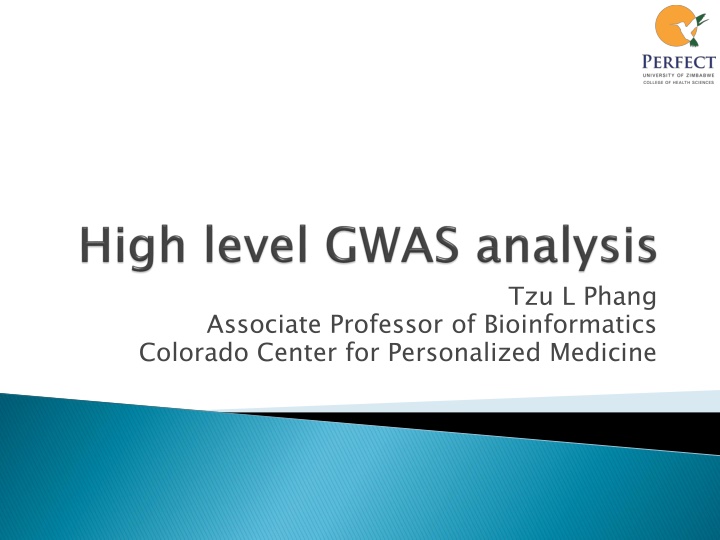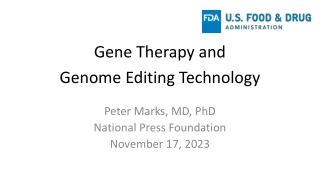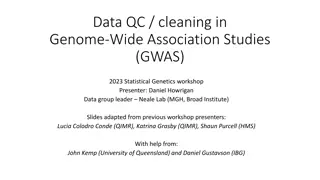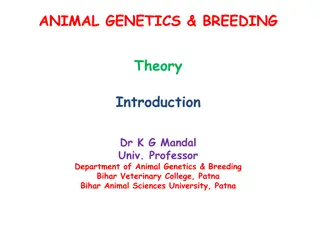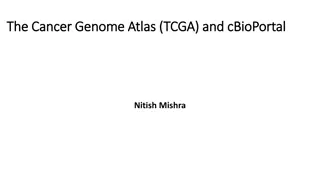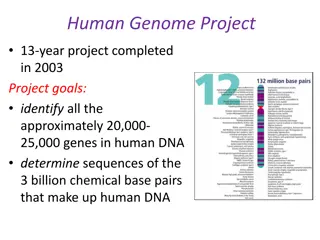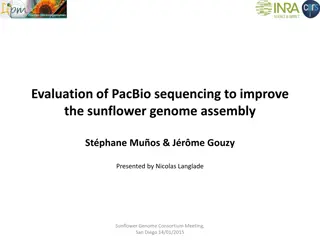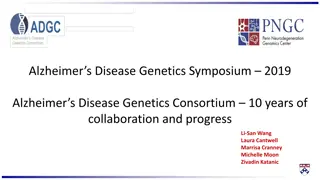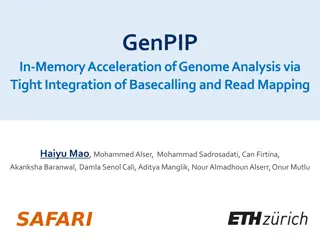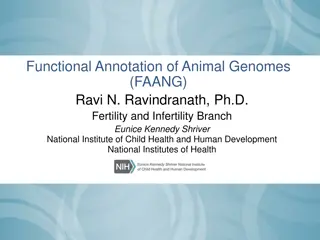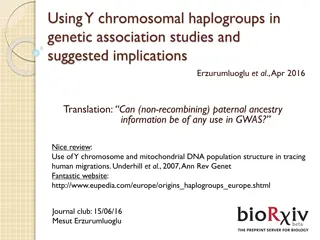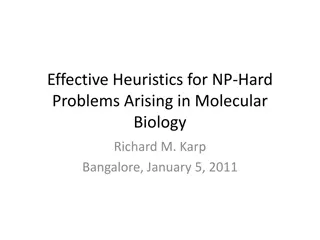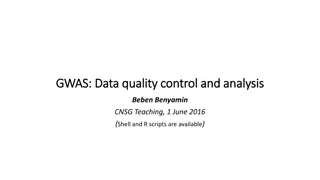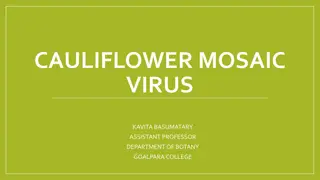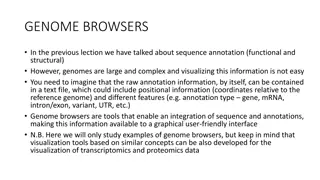Genome-Wide Association Studies: Uncovering Disease Genetics
A genome-wide association study (GWAS) is an approach involving scanning markers across the genome to identify variations associated with a specific disease. Large subject numbers are required due to the low odds ratios expected between SNPs and causal variants. Such studies are valuable for discovering genetic contributions to common diseases. Computing resources have made GWAS more accessible post-Human Genome and HapMap Projects, empowering researchers to find genetic links to diseases by genotyping cases and controls. Obtain DNA from cases and controls, measure genotypes, and identify SNPs associated with the disease.
Download Presentation

Please find below an Image/Link to download the presentation.
The content on the website is provided AS IS for your information and personal use only. It may not be sold, licensed, or shared on other websites without obtaining consent from the author.If you encounter any issues during the download, it is possible that the publisher has removed the file from their server.
You are allowed to download the files provided on this website for personal or commercial use, subject to the condition that they are used lawfully. All files are the property of their respective owners.
The content on the website is provided AS IS for your information and personal use only. It may not be sold, licensed, or shared on other websites without obtaining consent from the author.
E N D
Presentation Transcript
Tzu L Phang Associate Professor of Bioinformatics Colorado Center for Personalized Medicine
What is GWAS? What does GWAS tell us? What should we consider when designing or interpreting GWAS?
A genome-wide association study is an approach that involves rapidly scanning markers across genome (~0.5M to 1M) of many people variations associated with a particular disease A large number of subjects are needed because Associations between SNPs and causal variants are expected to show low odds ration In order to obtain a reliable signal, given the very large number of tests that are required, associations must show a high level of significance to survice the multiple testing correstion. Such studies are particularly useful in finding genetic variations that contribute to common, complex disease markers across genome many people (~2K) to find genetic low odds rations, typically below 1.5
Goal: uncover the genetic basis of a given disease Basic Idea: a rather vague idea of a study design that involves genotyping cases and controls at a large number (104to 106) of SNP markers spread (in some unspecified way) throughout the genome. Look for associations between the genotypes at each locus and disease statues
Computing resources to perform GWAS are now commonly available The completion of the Human Genome Project in 2003, and the International HapMap Project in 2005, researchers now have a set of research tools that make it possible to find the genetic contributions to common disease
Obtain DNA from people with disease of interest (cases) and unaffected controls Run each DNA sample on a SNP chip to measure genotypes at 300,000-1,000,000 SNPs in cases and controls Identify SNPs where one allele is significantly more common in cases than controls The SNP is associated with disease
Suppose that genotypes at a particular SNP are significantly associated with disease
This may be because the SNP is associated with some other factor (a confounder), which is associated with disease but is not in the same causal pathway
Possible confounders of genetic associations: Ethnic ancestry Genotyping batch, genotyping centre DNA quality Environmental exposures in the same causal pathway Nicotine receptors --> smoking --> lung cancer Hung et al, Nature 452: 633 (2008) + other articles in same issue Alcohol dehydrogenase genes --> alcohol consumption --> throat cancer Hashibe et al, Nature Genetics 40: 707 (2008)
Linkage disequilibrium (LD) is the non- independence of alleles at nearby markers in a population because of a lack of recombination between the markers LD is helpful, because not all SNPs have to be genotyped
Functional SNP is genotyped and an association is found Functional SNP (blue) is not genotyped, but a number of other SNPs (red) in LD with the functional SNP are genotyped, and an association is found for those SNPS
Suppose you test 500,000 SNPs for association with disease Expect around 500,000 x 0.05 = 25,000 to have p-value less than 0.05 More appropriate significance threshold p = 0.05 / 500,000 = 10-7 Genome-wide significance In our MS GWAS we considered SNPs for follow- up if they had p- values less than 0.001 To detect a smaller p-value need a larger study
